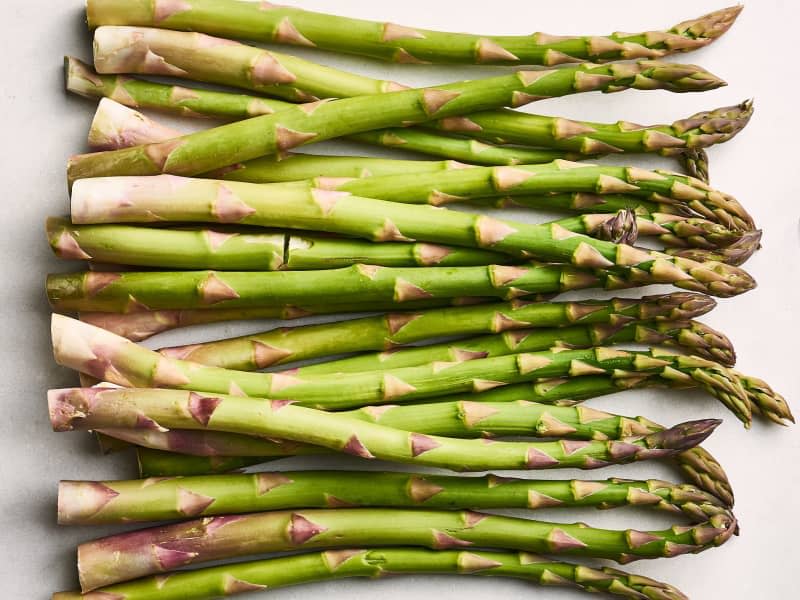The Restaurant Asparagus Trick I Always Do to Make It Seriously Amazing

Asparagus is one of my favorite vegetables. It’s incredibly versatile and can really be prepared any way you like. The tender green stems can be roasted with a little salt and pepper, sautéed on the stove top, or even steamed in the microwave. They’re just as welcome in a springy egg frittata as they are in pasta with lemon and Parmesan.
But the real deal is this: the asparagus you’re cooking could be much, much better. You don’t need to do anything fancy or complicated, all you need to do is peel it first.
Why You Should Be Peeling Your Asparagus
There is a lot of conflicting advice about how to prep asparagus. I usually associate peeling with produce that either has an inedible skin, like a banana, or skins that will change the dish if you leave them on (think skin-on mashed potatoes). Asparagus falls into neither of those camps. Thicker stalks develop a woody exterior but retain their tender interior, so it’s a good idea to peel that tough outer layer away, leaving you with a long, tender stalk of asparagus and much less waste than if you simply snapped half of it off.
Why Not Just Snap Off the Ends?
Good question. The asparagus we eat is specifically young. Asparagus stalks are the aboveground shoots of an underground “crown” that can grow asparagus for up to 20 years (!) Asparagus starts out green and tender, with the best of its flavor near the tip. The stalks can be thick or thin. Their thickness is determined by their plant variety and the age of the crown from where they grew. A thin stalk won’t become thicker as it ages.
However, as asparagus grows it does become tougher and woodier, starting at the bottom, which is why part of prepping asparagus is trimming or snapping off the very bottom of the stalks. Many recipes instruct you to snap off the ends of asparagus stalks, which can unintentionally lead to a lot of good veg going to waste. A good rule of thumb is to trim 1 inch off of the bottom of your asparagus, even if you’re going to peel it!
Thin asparagus stalks tend to be more tender than thicker ones, so it’s not necessary to peel them. This technique is great for asparagus that’s going into any kind of dish, from a salad to the grill.
How to Peel Asparagus
Trim 1 inch from the bottom of each stalk.
Separate thin from thick stalks.
Use a vegetable peeler to peel the bottom half of thick stalks to remove their woody exterior.

